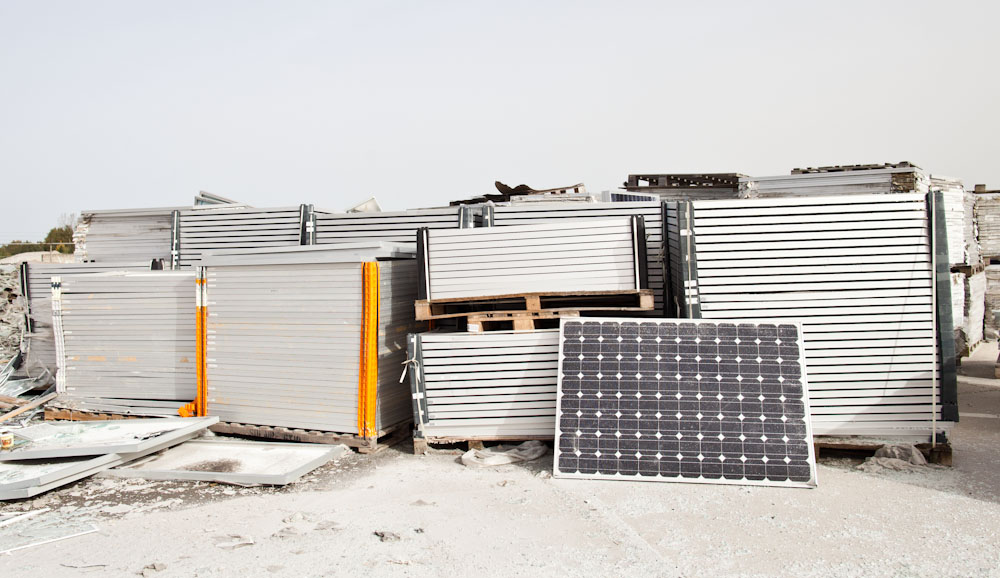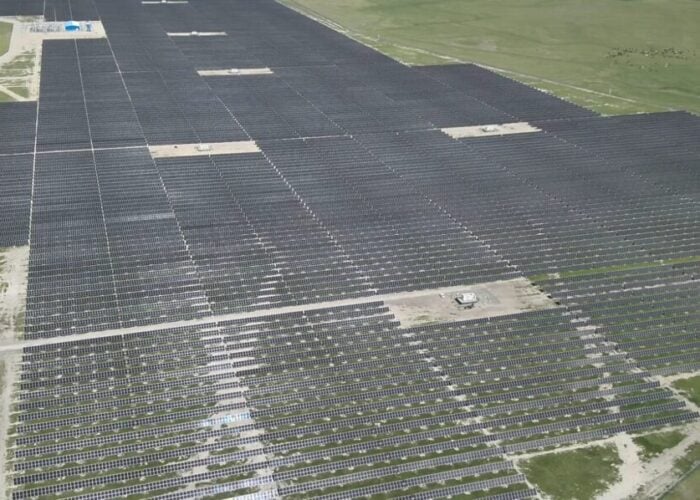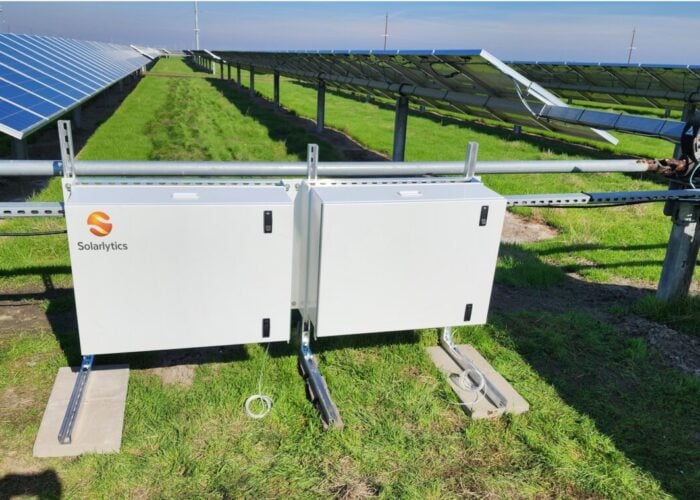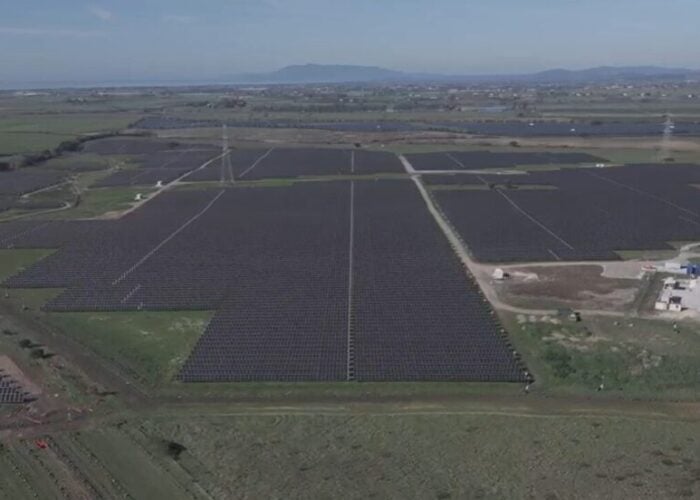
In the global rush to deploy solar PV as rapidly as possible to mitigate carbon emissions, the importance of handling projects in their end-of-life phase 20-40 years down the line is often underestimated. Decommissioning a PV system is essentially installation in reverse. It typically involves removing the PV array and all balance-of-system (BOS) equipment and restoring the land or infrastructure to its original condition or for a new use.
However, at present, there are limited studies on the processes of retiring these projects and cost estimates vary wildly, so it’s unclear whether asset owners and communities can expect to encounter financial and environmental headaches when projects come to an end.
Unlock unlimited access for 12 whole months of distinctive global analysis
Photovoltaics International is now included.
- Regular insight and analysis of the industry’s biggest developments
- In-depth interviews with the industry’s leading figures
- Unlimited digital access to the PV Tech Power journal catalogue
- Unlimited digital access to the Photovoltaics International journal catalogue
- Access to more than 1,000 technical papers
- Discounts on Solar Media’s portfolio of events, in-person and virtual
Moreover, a standard power purchase agreement (PPA) for a solar energy project lasts 25 years, and the industry is still relatively young, so there have been very few cases of decommissioning to date from which to learn best practices.
Yet fully disassembling a site at end-of-life brings considerable costs and logistical challenges, raising the prospect of instead repowering PV plants, with the main structures and interconnections kept in place while the PV panels are upgraded to more efficient solar technology.
Many PV systems will continue to operate past the initial design lifetime and remain economically productive for more than 30 years, while others will retire early, which confuses predictions of used PV panel volumes in the future. Either way, with a planetary goal to deploy 75TW of solar capacity by 2050, gigantic numbers of structures, modules and equipment are guaranteed to need processing in the future, whether in the form of scrapping, recycling or reusing, while vast swathes of land will need repurposing or restoring.
High-cost claims and solar graveyards
While there is less information on decommissioning than other aspects of the solar sector – a Wood Mackenzie spokesperson told PV Tech Premium that it “does not have any information specific to decommissioning” – others in the solar space are aware of the issues.
Tom Miller is the CEO of Cambridge Energy, which supplies a prefabricated tracker-based PV structure system, dubbed ‘Nomad’, to some of the hardest locations to deploy solar globally. It also supplies its structures to Norwegian developer Scatec for its re-deployable solar-plus-storage ‘Release’ system.
Miller claims: “Most PV developers and supportive onlookers are focusing on getting as much PV into the ground or on roofs as quickly as possible and drawing in profits, but few are looking at the elephant in the room 25 years later, which is that decommissioning costs may be three times higher than the original commissioning costs.”
Traditional solar plant preparations usually require deep piles and trenching, which, for proper decommissioning, all need to be taken back out with the ground restored to its original condition.
“Good luck, it’s impossible,” says Miller. “We talk about solar graveyards. It’s just a nightmare.”
Miller suggests that globally this issue is widely overlooked. For example, only half of US states have a decommissioning requirement in their commissioning plans, and many of these are very recent additions. It was this issue that led Cambridge Energy to develop its re-deployable solution that can be installed and taken back up quickly and easily by using anchors rather than piling deep into the ground.
A number of markets where the Nomad is deployed, such as India, Australia and some African countries, often have piles refused in the drilling process due to the many rocks and boulders underground. An anchor, on the other hand, requires no cement or deep drilling, making this approach more viable, and suitable for decommissioning work.
“If it’s easy to relocate, then the recycling can be done off-site in the factory, you can take the models back off, you can reuse the frame, as opposed to basically running some sort of bulldozer over everything – that’s a disaster,” adds Miller.
Lessons from other sectors
However, this is not to say that the issue has been completely ignored in the power sector. Decommissioning is also becoming a huge topic of conversation amongst the mining community in Australia, with concerns over costs and environmental impacts, and as solar becomes more prevalent in this industry, there could be lessons for the broader solar sector.
The remote DeGrussa copper mine in Western Australia was the recent scene of a high-profile solar project decommissioning after just seven years in operation. The solar-plus-storage system, owned by French energy firm Neoen, was first touted in 2015 as a unique solution to powering mining operations.
However, copper resources have now been exhausted at the mine, and no other off-takers for the project’s solar power have been found, according to local reports. This early and expensive decommissioning has gained notoriety for its financial impact and expensive carbon offsetting figures. Despite being seen as a trailblazing project, the early ending has set off alarm bells for some critics.
“There is significant pressure to ensure the ground is how you found it,” adds Miller. “The cost of decommissioning and remediation is very, very large in these markets.”
Indeed, the overall configurations of PV plants reaching end-of-life hold great value, because these sites already have transmission infrastructure and substations in place at substantial cost, says Sarvesh Suri, regional industry director of infrastructure and natural resources in Africa at the International Finance Corporation. Therefore, instead of widespread disassembly, he expects most projects to go through this repowering process.
“Even if the plant itself needs to be decommissioned and removed, it’s unlikely that somebody would go and completely uproot the plant and build a hotel in its place or a farm,” Suri adds.
Tearing down the costs
However, Jenny Chase, solar analyst at BloombergNEF, says: “Tearing something down does not cost more than building it except in very rare cases. The major cost is going to be picking up the stuff and moving it.
“Usually, it’s assumed to be negligible, but if you must remove and recycle all the materials – landfilling is cheaper – the removal and transport will cost something, of course. Recycling modules costs around US$10.81-21.63 (€10-20) per module.”
Nonetheless, analysis from the US National Renewable Energy Laboratory (NREL) has revealed a lack of consistency in decommissioning plans due to a massive range in cost estimates.
The NREL report, ‘Best Practices at the End of the Photovoltaic System Performance Period’, from February 2021, calculated a cost estimate for decommissioning a 1MW PV System at US$368,000, whereas a New York State Energy Research and Development Authority (NYSERDA) guidebook from May 2023 estimated costs of equivalent to US$30,000 per MW. Although the reports are two years apart, the 12-fold discrepancy in cost estimations is stark.
Similarly, sizable ranges of cost estimates were found across all the related resources that NREL looked at, says Taylor Curtis, regulatory and policy analyst at the Strategic Energy Analysis Center of the NREL, which indicates that more research is needed to understand what the real costs are.
One major factor impacting the cost range is how comprehensive the land reclamation process is, which is often related to the type of terrain in question.
“The requirements to refurbish or reclaim the land back to its original state is, of course, going to be much higher on prime agricultural land than industrial zoned land,” says Curtis.
Another key problem of estimating costs is the uncertainty about the value of equipment and material in one or two decades’ time and this concern is applicable across the global PV industry.
This is demonstrated in another NREL report, ‘A Survey of Federal and State-Level Solar System Decommissioning Policies in the United States’, from December 2021, which stated: “The debate around allowing salvage to be calculated in a cost estimate boils down to concerns about over-estimating the future value of recycled PV system materials and resale of PV equipment versus underestimating the cost to properly decommission and dispose of PV equipment in lieu of reuse and recycling options.”
Decommissioning in the UK and US
However, decommissioning is also an aspect of solar development in some mature solar markets. The UK has already included retiring plans in its renewable energy processes, with owners of such projects having to submit decommissioning plans in their financing bids.
“Usually, the decommissioning obligations are good enough to concentrate people’s minds,” says Ross Fairley, partner and head of renewable energy at UK law firm Burges Salmon. “But the reality is, if you’re building a solar project, the last thing in your mind sometimes is what you have to do at the end. The focus is going to be immediately on the construction and build and often a lot of these solar projects get flipped on and sold, so there is an issue there.
“Do developers spend enough time working out what the decommissioning obligations might be in the longer term? Possibly not,” he adds.
Nonetheless, legal powers and obligations are in place to aid this decommissioning, and Fairley says most UK real estate leases will impose decommissioning conditions and obligations and bonds are often used for assurance.
Similarly, more US states are engaging with decommissioning work. Just 14 US states had decommissioning requirements for utility-scale PV in 2021, but today 29 states – more than half – have such policies applicable to PV systems, according to the Electric Power Research Institute (EPRI).
US solar projects, of which 80% were installed within the last seven years, are far younger than the older plants in Europe so attention is only just beginning to shift towards decommissioning, says Curtis.
“There are a lot of incentives to refurbishing or repowering versus decommissioning, such as leveraging existing permits, authorisations and utility interconnections on the same site or building upon existing relationships and partnerships,” adds Curtis. “In some cases, decommissioning will make more sense, but we think that there’s probably going to be more repowering and refurbishing of existing sites, rather than decommissioning the whole system.”
The overall decommissioning issue echoes back to an earlier chapter of history in the oil and gas industry, says Curtis. Specifically in the US, there are nearly 3 million orphaned or abandoned oil and natural gas wells and half a million orphaned or abandoned mines, including rock, lithium and coal excavations. This has led to longstanding community concerns and decommissioning policies coming to the forefront.
“That’s why they are looking for these policies to be in place for the major growth that we’re seeing in the wind and solar industries today,” adds Curtis. “It’s critically important that we figure out this decommissioning piece.”







